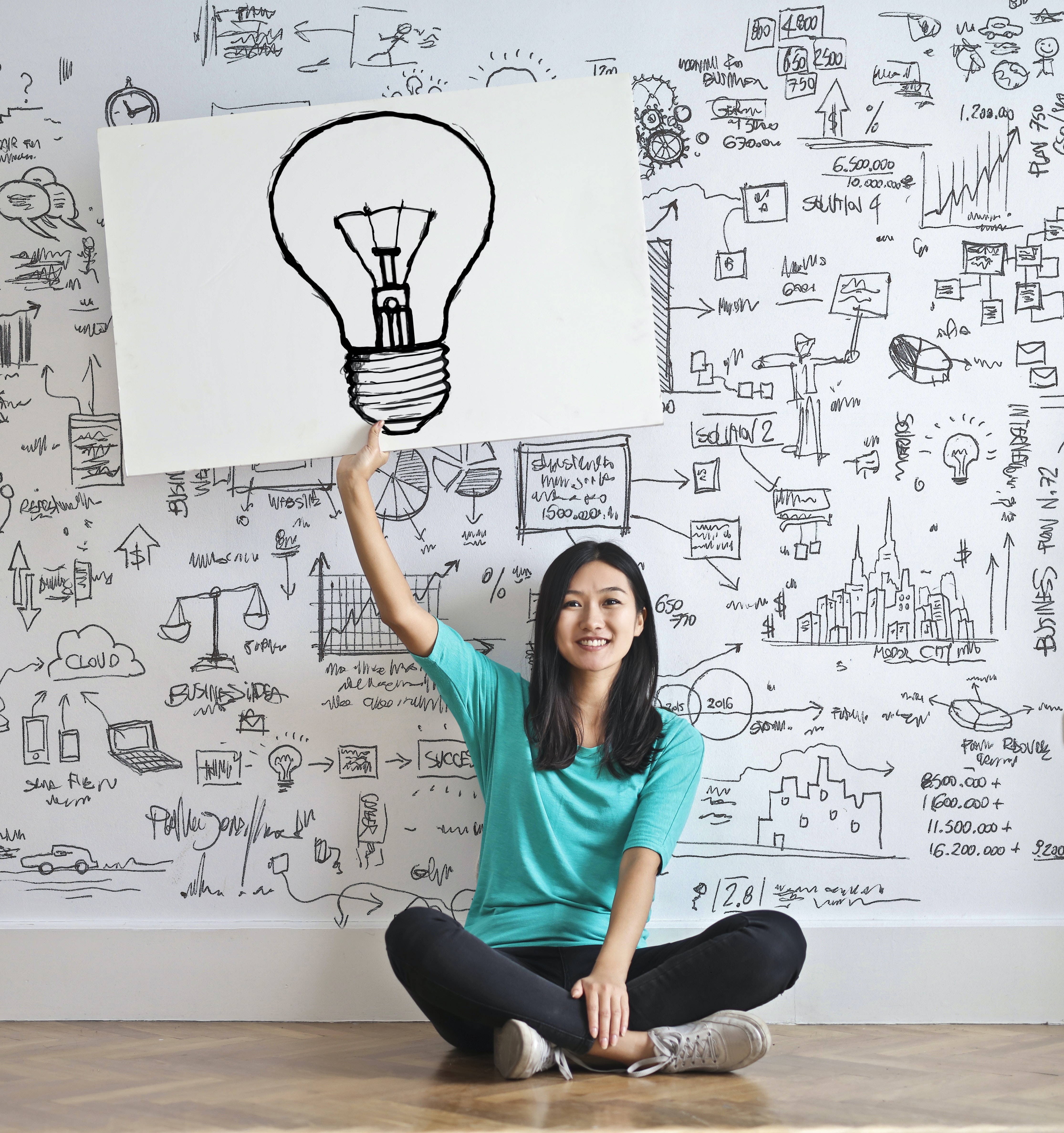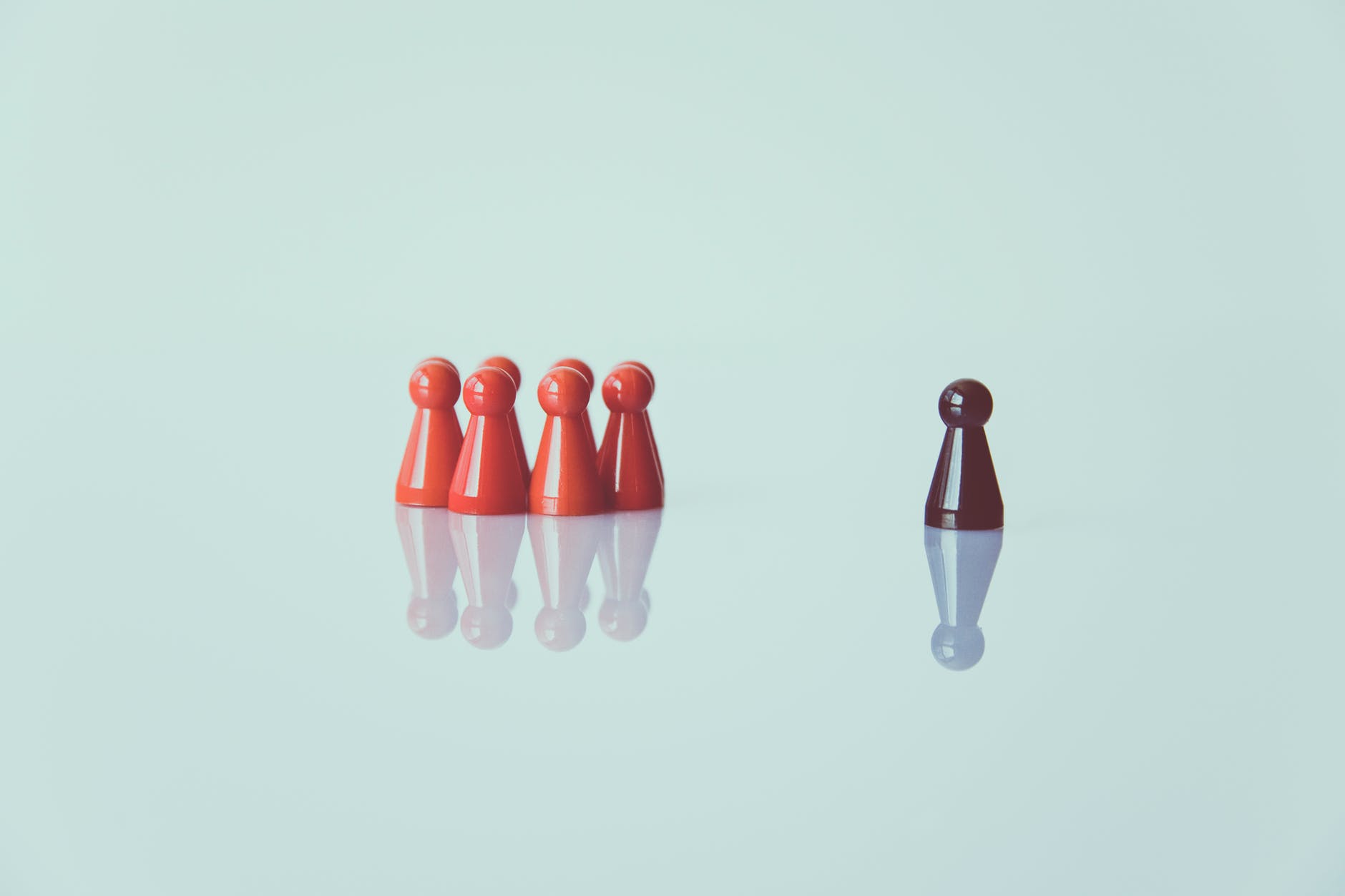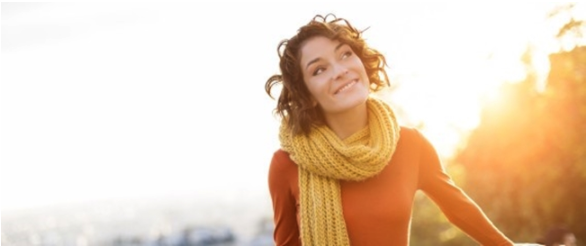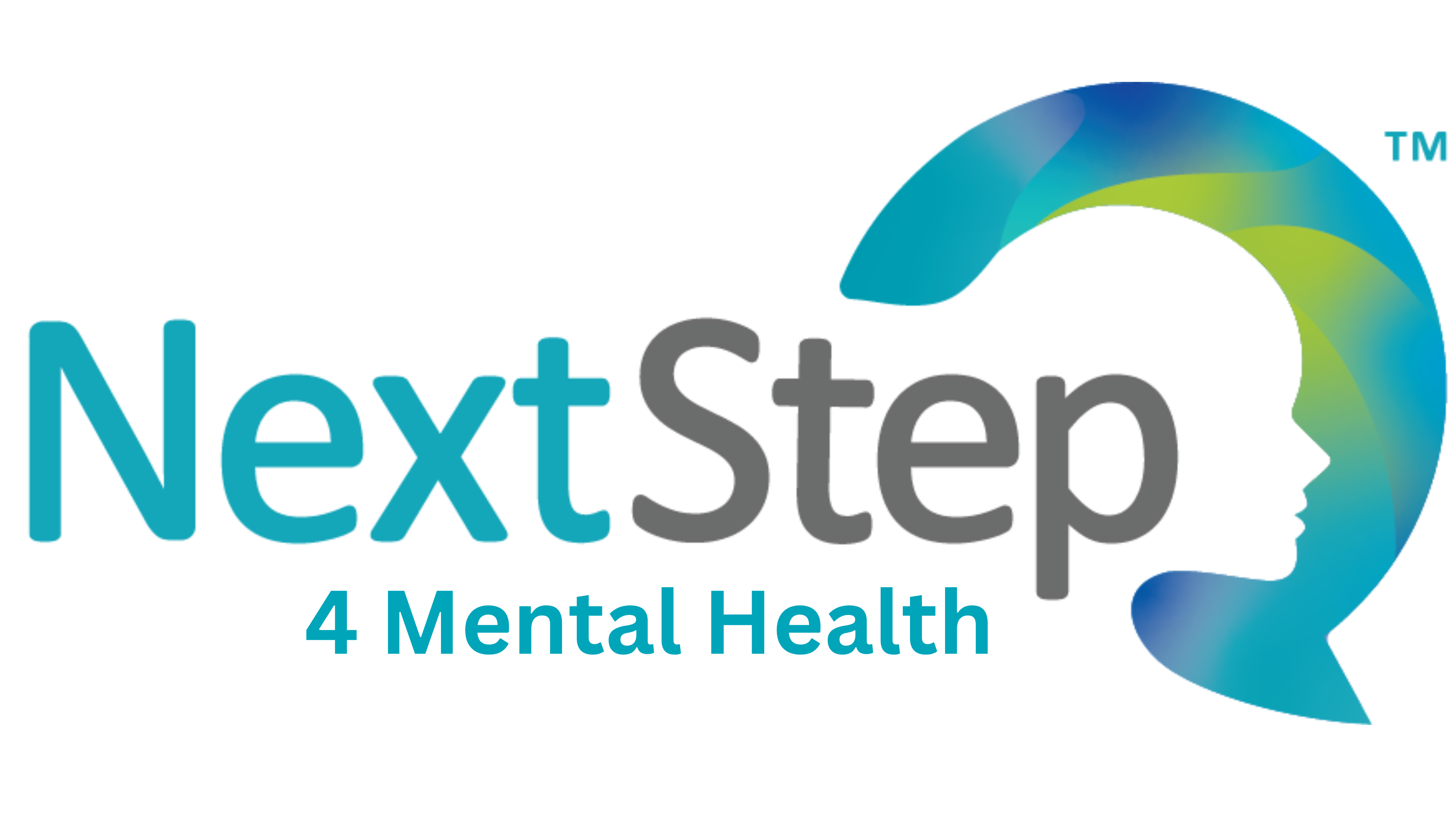
Do Warm-Colored Lights Help Sleep?
Perhaps you’ve noticed that e-readers, smartphones, and other tablets have an option called “night mode” — have you ever wondered what “night mode” is and why the screen turns orange? What’s up with these warm-colored lights?
There’s a lot of discussion about warm-colored lights and how they affect your ability to get a good night of sleep. Getting a good night of sleep is critical for your physical and mental well-being. According to researchers, many conditions, including depression, anxiety, and ADHD, can interfere with your sleep so it’s essential to prioritize quantity and quality sleep.
And the big question is: can warm-colored lights really help you sleep better?
To get to the bottom of this question, we spoke with Monica Clark, LPA to get some answers.
What Exactly Is a Warm-Colored Light?
“To fully understand the role that warm-colored (red, orange, and yellow) light plays in sleep, it is important to first understand your body’s natural circadian rhythms and how various types of light affect sleep-wake cycle,” Monica says. She continues, “Circadian rhythms are basically your body’s 24-hour clock that helps you to naturally alter between sleepiness and alertness at regular intervals. It is commonly referred to as your sleep-wake cycle. Circadian rhythms are impacted by both natural and artificial light. With regard to natural light, when your brain, the hypothalamus to be more precise, receives a message from your eyes that it is dark, your brain stimulates the production of melatonin, leading to sleepiness.
In the modern-world, we are surrounded by artificial lighting 24-hours per day. A large percentage of this artificial light utilizes LED technology, which research has shown to emit blue light. LED lighting is found in many light bulbs, but also in back-lit electronics, such as televisions, computer screens, tablets, smart phones, and e-readers. Using these devices or being in a room lit with LED bulbs can serve to increase alertness and arousal in the brain and have a negative impact on sleep. [7] Research has supported that the brain is most sensitive to the impact of artificial light during the evening hours. [1] Additionally, there is some research to suggest that artificial green light, especially during evening hours, serves to decrease natural production of melatonin in the brain at similar levels to the blue light spectrum. [3][4][8]

As opposed to the cool-light spectrum, lighting using colors on the warm spectrum, which includes yellow, orange, and red tones, demonstrated health improvements. Research suggests that warm-light tones do not negatively impact melatonin secretion [6] and, in another study, Lin et al. [5] found that being in a room illuminated with lights on the warm light-spectrum increased production of both melatonin and glutamate, a neurotransmitter that plays an important role in learning and memory. Despite these benefits, however, there is research that suggests that exposure of high levels of any light color decreases subjective feelings of sleepiness and increases feelings of vigilance and arousal [2]; so, even while using beneficial warm lighting, it is important to focus on keeping the lighting low and dim.
So, what does this mean? Based upon current research, the best suggestion is to use bright, cool tones during daytime hours to increase alertness. During the darker, evening hours, when melatonin production and secretion is vital, switching to dim, warmer tones of lighting may create some benefit for sleep.”
How to Implement These Suggestions into Your Life
Now that we know how cooler tones affect your circadian rhythm, what can you do to increase your quality of sleep at night?
Here are Monica’s suggestions:
- Eliminate or decrease the use of back-lit electronics devices in the one to two hours before bed. This continues to be the strongest recommendation to minimize the impact of artificial light on sleep.
- If you absolutely cannot unplug completely, the use of red, orange, or yellow tinted glasses or screen covers filters some, but not all, blue light. Red lenses and covers have shown to also filter some green light as well.
- Switch some light fixtures in your home from bright, white lights to dim, warm-toned lights. Two hours before bed, switch off the white lighting and turn on warmer lighting. However, remember to use dim, not bright lights, regardless of the color.
If you’re reading on an e-reader or your smartphone, be sure to adjust the settings. It might say “Night Shift” or “Night Mode” depending on what device you’re using. See below for an example of what that looks like.

Is Something Else Affecting Your Ability to Sleep?
If you use warm-colored lights at night and practice good sleep hygiene, but still struggle to get a good night of sleep, it’s worth mentioning to your mental healthcare provider. Racing thoughts, insomnia, and anxious thoughts can keep you from a peaceful night of sleep. According to the National Alliance on Mental Health, about 50% of insomnia cases are connected to psychological distress, anxiety, or depression. If a mental health condition or past trauma is keeping you from getting the sleep you deserve, you may benefit from treating the underlying condition. Cognitive-behavioral therapy, for example, can help you control the unwanted thoughts that keep you awake at night.
Post-traumatic stress disorder (PTSD) and panic disorder are also known for causing nightmares and night terrors. According to the US Department of Veteran Affairs, as many as 96% of those with PTSD experience nightmares. Treatment for PTSD or panic disorder can also help eliminate nightmares and other sleep problems associated with the condition.
Here at Next Step 2 Mental Health, we provide comprehensive mental health care. Whether anxiety, trauma, PTSD, or other forms of psychological distress are impacting your ability to sleep, we can help you get the relief you need. Call 502-339-2442 or send us a message to request more information.
About Monica Clark
 Monica Clark is a Licensed Psychological Associate who focuses on treating children and adolescents struggling with anxiety, depression, and trauma-related emotional struggles. Monica uses Cognitive-Behavioral Therapy and trauma-focused therapy to help children and teens learn to self-regulate and have greater control over their thoughts and behaviors.
Monica Clark is a Licensed Psychological Associate who focuses on treating children and adolescents struggling with anxiety, depression, and trauma-related emotional struggles. Monica uses Cognitive-Behavioral Therapy and trauma-focused therapy to help children and teens learn to self-regulate and have greater control over their thoughts and behaviors.You can request an appointment with Monica here.
References
- Blume, C., Garbazza, C., & Spitschan, M. (2019). Effects of light on human circadian rhythms, sleep, and mood. Somnologie, 23(3), 147-156.
- Figueiro, M. G., Bierman, A., Plitnick, B., & Rea, M. S. (2009). Preliminary evidence that both blue and red light can induce alertness at night. BMC neuroscience, 10, 105.
- Gooley, J.J., Rajaratnam, S.M.W., Brainard, G.C., Kronauer, R.E., Czeisler, C.A., & Lockley, S.W. (2010). Spectral Responses of the Human Circadian System Depend on the Irradiance and Duration of Exposure to Light. Science Translational Medicine, 2(31), 31-33.
- Horne, J.A., Donlon, J., & Arendt, J. (1991). Green Light Attenuates Melatonin Output and Sleepiness during Sleep Deprivation. Sleep, 14(3), 233-240.
- Lin, J., Ding, X., Hong, C. et al. (2019). Several biological benefits of the low color temperature light-emitting diodes based normal indoor lighting source. Scientific Reports, 9, 7560.
- Morita T, Tokura H. (1996) Effects of lights of different color temperature on the nocturnal changes in core temperature and melatonin in humans. Applied Human Sciences, 15(5), 243-246.
- Thomas, Liji. (2019). Artificial Light Exposure and Circadian Rhythm. News-Medical. Retrieved from https://www.news-medical.net/health/Artificial-Light-Exposure-and-Circadian-Rhythm.aspx.
- Wright HR, Lack LC. (2001) Effect of light wavelength on suppression and phase delay of the melatonin rhythm. Chronobiol Int. 18(5):801-808.

How to Tell If You Have a Social Anxiety Disorder
It’s normal to experience occasional nervousness in social situations. For example, you might feel butterflies if you’re going on a first date, or if you have to give an important presentation at work. However, occasional nervousness isn’t the same thing as social anxiety disorder. With social anxiety disorder, everyday social situations can create stress and anxiety that disrupts your life.
The good news is that social anxiety disorder (sometimes called social phobia) can be treated, but the first step is to get a proper diagnosis.
So how do you know if you have social phobia? We’ve got the answers here.
Symptoms of Social Anxiety Disorder
All of us experience uncomfortable emotions to some degree on a daily basis. This can include:
- Unease
- Apprehension
- Worry
- Nervousness
With periodic stressors, the body only has episodic reaction to the stressors. It’s not on-going. For instance, after your big presentation at work, you no longer feel stressed or uneasy. The uncomfortable feelings end when the periodic stressor stops. When anxiety symptoms develop into ongoing states of distress, it can lead to a diagnosis. With social anxiety disorder, you might feel these uncomfortable emotions just thinking about social situations. The on-going stress and anxiety can disrupt your life.
Signs and symptoms of social phobia include emotional, physical, and avoidance symptoms.

Emotional symptoms
Emotional symptoms include:
- Fear of social situations (fear of being judged)
- Anxiety about embarrassing yourself
- Fear of talking (or interacting) with strangers
- Replaying social interactions over and over in your head
- Feeling anxiety in anticipation of social interactions
- Fearing future events
Physical symptoms
Physical symptoms of social anxiety include:
- Blushing
- Flushed face or neck
- Intense sweating
- Shaky voice when speaking
- Upset stomach
- Rapid heartbeat
- Dizziness
Avoidance symptoms
Social phobia can impact the quality of your life, especially if you avoid activities or events that trigger anxiety. Avoidance symptoms include:
- Avoiding activities that require interaction with others (such as going to the grocery store, speaking to a waitress, etc.)
- Cancelling events with friends or family
- Avoiding any situation in which you might be the center of attention (public speaking, giving a speech, etc.)
Can children experience social anxiety? Yes. Children might refuse to speak, hide behind parents, and have a temper tantrum.
Treating Social Anxiety Disorder
Left untreated, social phobia can lead to low self-esteem, poor social skills, and difficulty maintaining relationships. The good news is that social anxiety disorder can be treated. Like all anxiety disorders, individuals with social phobia can benefit from mental health care. Common treatments include:
- Psychotherapy, including cognitive behavioral therapy (CBT)
- Medication (You can learn about medication management here.)
You can also reduce stress and anxiety by making time for activities you do enjoy, keeping a journal, and regularly practicing stress management techniques. According to the Anxiety and Depression Association of America, exercise (including gentle walking) can help boost your mood and reduce stress. [1]
Can a Pandemic Trigger Social Anxiety?
Pandemics can be stressful on individuals and entire families. Over the past few months, we’ve learned about a new disease — and a whole host of new social conventions. We’ve learned about social distancing, isolation, and how often (and what) items needs to be disinfected. According to the Centers for Disease Control and Prevention (CDC), stress, depression, and anxiety are increasing. [2]
Many individuals find that going into public right now can be scary… but can a pandemic trigger social anxiety?
To find out, we asked Dr. Brian Briscoe.
Let’s start with a correct definition of social anxiety. DSM V defines social anxiety as a “A persistent fear of one or more social or performance situations in which the person is exposed to unfamiliar people or to possible scrutiny by others…that is persistent, typically lasting 6 or more months.”
I do not have evidence that social anxiety will necessarily increase in post-pandemic times, but I do suspect that we may see an increase in overall rates of anxiety disorders in general.
Why?
Based on a study recently published in JAMA, we know that U.S. adults are experiencing a significantly higher degree of psychological distress during the Covid public health crisis. [3]
It is quite likely that higher rates of psychological distress will trigger existing pre-existing mental illness within vulnerable persons, and may also lead to the development of new mental illness, which include many anxiety disorders such as panic disorder, agorophobia, and PTSD – to name a few.
In my clinical practice, I have personally witnessed the stress/distress of Covid-19 trigger worsening symptoms in persons who struggle with a numeber of anxiety disorders such as Generalized Anxiety Disorder, PTSD, and Panic Disorder.
The good news is that we have treatments for these situations.
How Do You Tell the Difference Between Social Anxiety and Generalized Anxiety?
If you’re struggling with ongoing states of distress and feelings of anxiety, how do you know if you’re dealing with social anxiety or generalized anxiety?
Dr. Briscoe explains the difference:
Persons who struggle with generalized anxiety disorder tend to struggle with a broad variety of worries. They might:
- Have trouble turning their mind off
- Worry about lots of things
- Sweat the small stuff
- Worry about school, bills, finances, relationships, lots of things.
The worry may sometimes cause restlessness, fatigue, difficulty concentrating, irritability, or trouble sleeping.
Persons who struggle with social anxiety (a.k.a. social phobia), on the other hand, tend to experience a high degree of anxiety primarily in social settings, or in situations in which they fear they will be scrutinized or ‘judged’ by others.
Some people who struggle with social anxiety also struggle with generalized anxiety and vice versa, but not always.
Explore Your Next Steps
At NextStep 2 Mental Health, we provide comprehensive and compassionate anxiety treatment. Whether you’ve been struggling with generalized anxiety or social anxiety disorder, we can help you feel better. Give us a call at our Louisville, Kentucky office at 502-339-2442, or send us a message to request more information.
You can also request an appointment with our convenient scheduling tool here.
About Dr. Briscoe
 Dr. Brian Briscoe is a board-certified psychiatrist and the medical director of adult programs. Dr. Briscoe was voted a “Top Doctor” by Louisville Magazine. You can make an appointment with Dr. Briscoe here .
Dr. Brian Briscoe is a board-certified psychiatrist and the medical director of adult programs. Dr. Briscoe was voted a “Top Doctor” by Louisville Magazine. You can make an appointment with Dr. Briscoe here .
References:
- https://adaa.org/living-with-anxiety/managing-anxiety/exercise-stress-and-anxiety
- https://www.cdc.gov/coronavirus/2019-ncov/daily-life-coping/managing-stress-anxiety.html
- Emma E. McGinty, Rachel Presskreischer, Hahrie Han, Colleen L. Barry. Psychological Distress and Loneliness Reported by US Adults in 2018 and April 2020. JAMA, 2020; DOI: 10.1001/jama.2020.9740

What is Mental Health?
Mental health is the state of well-being in which people understand their own potential, are capable of dealing with life’s stresses and challenges,
Learn More